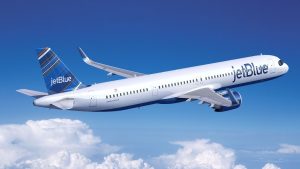
US planemaker Boeing has reportedly flagged “many potential hazards” in European rival Airbus’ new narrow-body jet, the A321XLR, in a submission made to the EASA.
The Airbus A321XLR is set to the longest-range single-aisle jet, however Boeing has informed the European Union Aviation Safety Agency that the architecture of the fuel tank designed to increase the plane’s range could pose a threat to passengers.
In order to hold additional fuel reserves, the design of the new A321XLR includes an additional fuel tank that is essentially moulded into the fuselage under the passenger cabin, taking up less space and holding more fuel for the aircraft.
According to Boeing, the placement of such tanks within the fuselage “inherently provide less redundancy than structurally separate fuel tanks” and could pose safety threats should the plane veer off the runway or if its landing gear fails.
The EASA had previously raised its own concerns about the placement of these additional tanks, particularly the additional fire risk, and stated it would impose additional conditions to ensure the safety of passengers.
“An integral fuselage fuel tank exposed to an external fire, if not adequately protected, may not provide enough time for the passengers to safely evacuate the aircraft,” EASA said.
The EASA has already asked Airbus to make required changes to its design under the conditions of the new fuel tanks.
The agency stated that the location of the tank under the passenger cabin is likely to give passengers sitting directly above “cold feet”, and required the addition of insulation panels between the tank and the cabin floor.
However, such insulation panels would need to meet “burn-through” criteria, which Airbus has argued is “technically not feasible”, due to space limitations.
“Public consultation is part-and-parcel of an aircraft development program,” an Airbus spokesman said, adding any issues raised would be tackled together with regulators.
The Airbus A321XLR is due to enter service by late 2023, however industry analysts suggest this date could be pushed back due to tighter industry oversight in light of the 737 MAX certification fiasco.
Meanwhile, Boeing continues to work towards the development of its own mid-range jet that would compete directly with the A321XLR.










